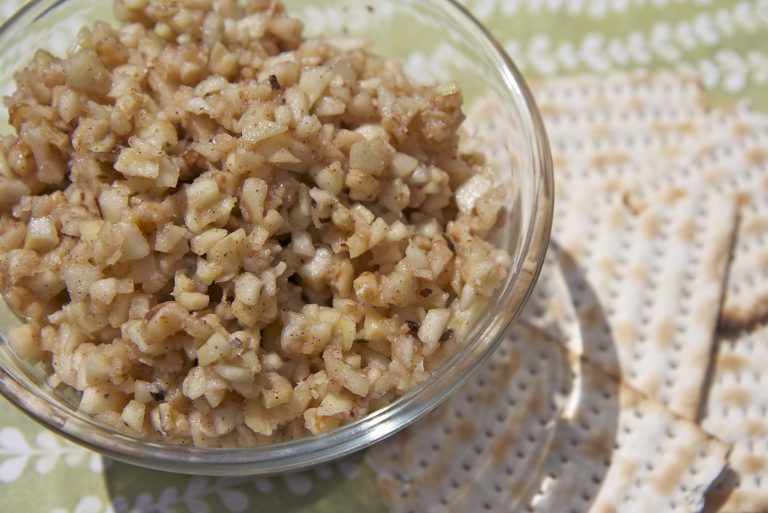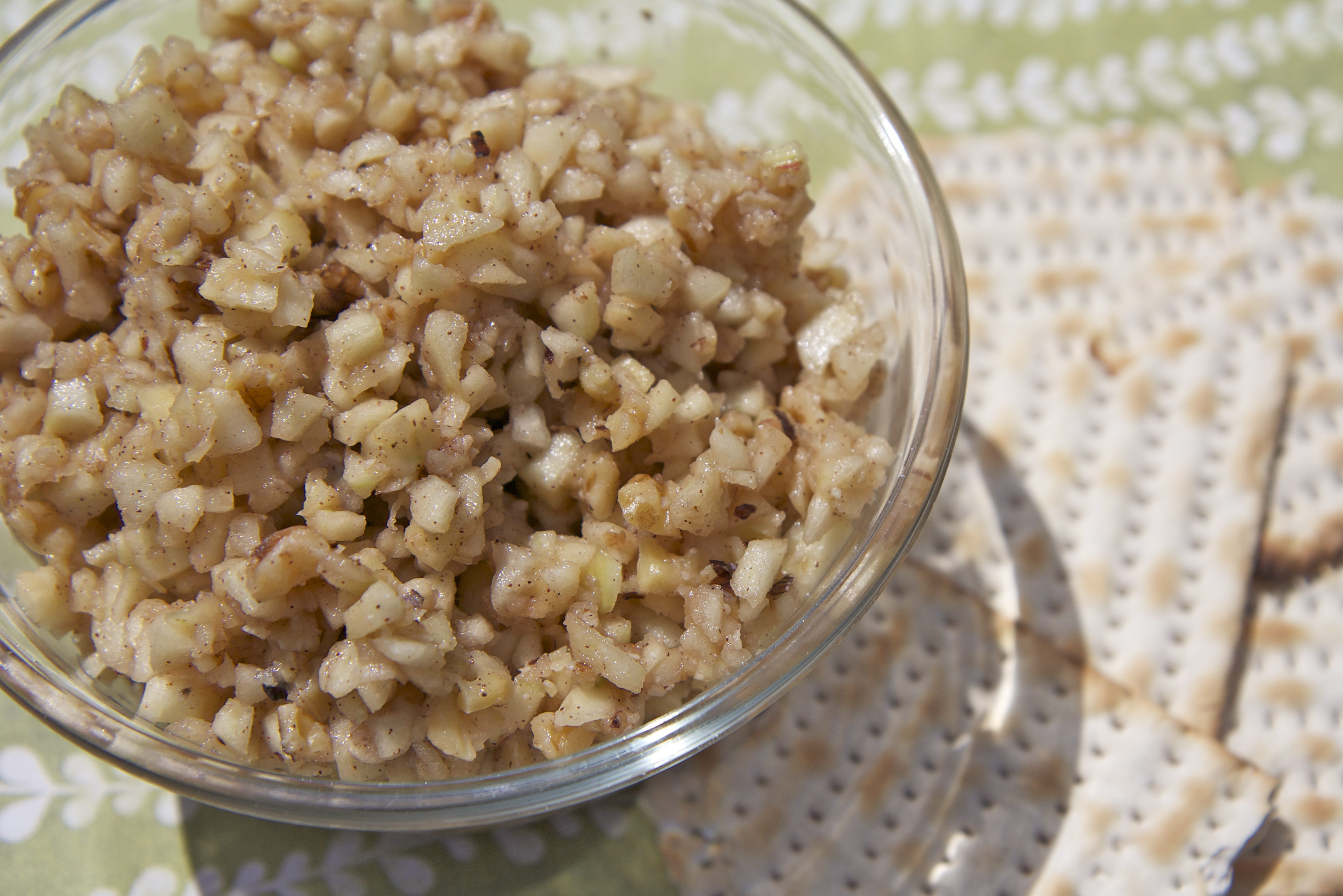 Like most Ashkenazi Jews I grew up thinking that haroset meant grated apples mixed with ground up walnuts and a little Manischewitz wine. Never mind that we read the Haggadah twice during the holiday and discussed its meaning and I learned that we ate haroset to symbolize the mortar spread between the bricks that were used to build Pharaoh’s pyramids. On some level I could have figured out that any edible but pasty-glue-ish concoction would suffice. But we always had the apple mixture, as did everyone else we knew. We all took a taste of it, on cue, but it was not intended to be something scrumptious.
Like most Ashkenazi Jews I grew up thinking that haroset meant grated apples mixed with ground up walnuts and a little Manischewitz wine. Never mind that we read the Haggadah twice during the holiday and discussed its meaning and I learned that we ate haroset to symbolize the mortar spread between the bricks that were used to build Pharaoh’s pyramids. On some level I could have figured out that any edible but pasty-glue-ish concoction would suffice. But we always had the apple mixture, as did everyone else we knew. We all took a taste of it, on cue, but it was not intended to be something scrumptious.
Years later, as a mature woman, I read about other people’s haroset recipes. Sephardic versions with figs and almonds, Indonesian style with banana and coconut, Yemenite haroset made with pomegranates and sesame seeds. An acquaintance I met at my synagogue told me she made haroset “Hawaiian style” with pineapple and macadamia nuts.
At some point I discovered a recipe that looked really good and for my family, at least, was very unusual in that it included chopped dried apricots, pistachio nuts and cinnamon. I experimented with it, changed a few ingredients, added fresh chopped apple (a token look back at my grandmother’s traditional version), decided to sharpen it with a judicious dose of cayenne pepper and mixed in both sweet wine and a good dollop of apricot jam to bind it all together. I served two types of haroset that year, the old-fashioned apple version and my new “Persian” alternative.
My young children declared it was the worst thing they ever tasted and would prefer real mortar rather than eat it.
Everyone else said it was incredibly delicious and they could never think about haroset in the same way ever again. From now on, they said, I should always serve this Persian kind.
After that, instead of eating haroset just as a token during the reading, it became one of the side dishes, as important a part of the meal as the entree and vegetables. In fact, my family and guests liked the Persian haroset so much I thought about making it during the year, to serve as a condiment or chutney, but I wanted it to always be a special Passover dish, so I reserve the recipe for the holiday only.
Since that Passover, so many years ago, I have always served three harosets at the first Seder: Persian, Ashkenazi and some other variety that I find or invent. The third recipe changes every year. Everyone still loves the special apricot-pistachio Persian one the best. My children, now grown, tell me to be sure to make plenty of it, double the recipe in fact, because it is their favorite dish at the Seder and they can’t remember ever objecting.
Ronnie Fein has been a freelance food and lifestyle writer since 1980. She currently writes regular features for the food and community sections of daily newspapers and has written articles for Newsday, Cook’s Illustrated, Consumer’s Digest, Connecticut magazine, and many other publications. She operates the Ronnie Fein School of Creative Cooking in Stamford, Connecticut and is the author of three cookbooks, the most recent is Hip Kosher (DaCapo, 2008).
